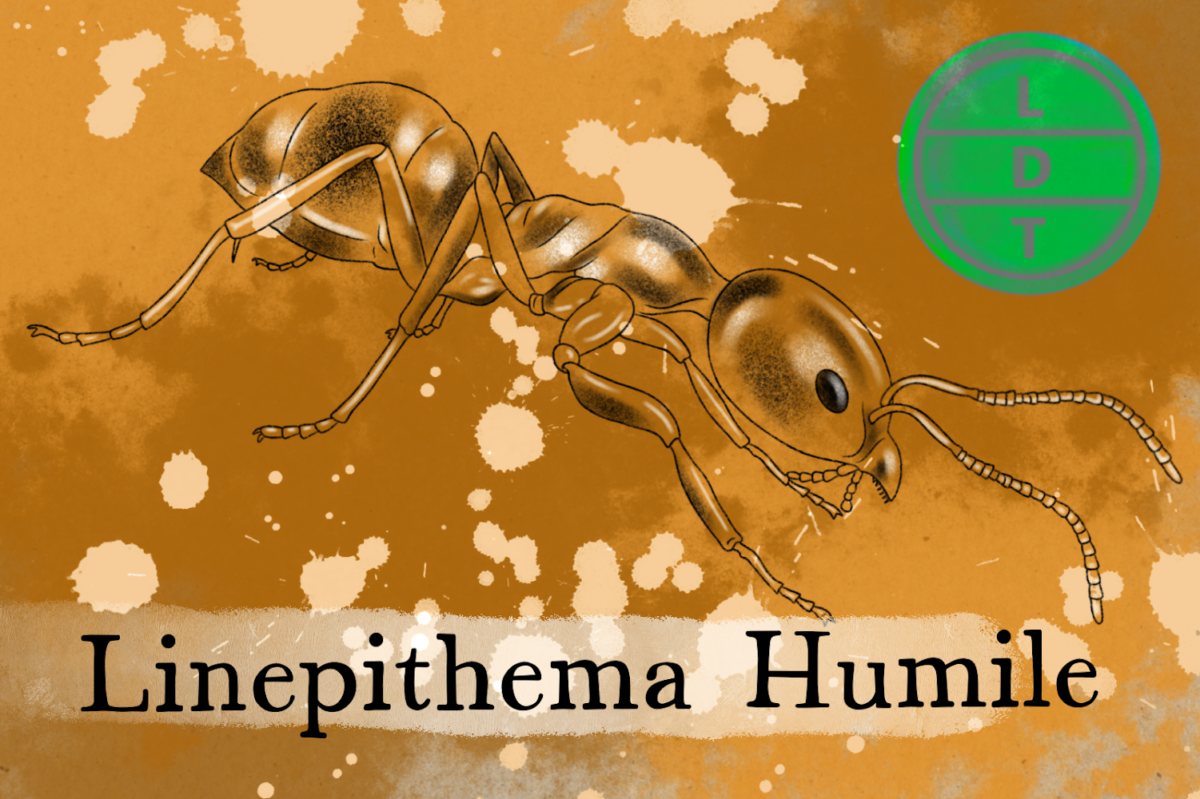“…and today we’re talking about an invading hoard that isn’t even supposed to be here. But more on that later.”
If you didn’t already, you should know that there are millions of ants living under your feet. With an estimated 20 quadrillion of these little guys on the planet, you’re never very far away from a teeming colony of coordinated insects. This is mostly thanks to the Argentine Ant, which has found a way to span the globe using peace, harmony, and aggressive imperialist and scorched earth policies. But sometimes it’s not enough to survive, you need to win here in Life, Death, and Taxonomy.
Measure Up
Welcome to the beloved Measure Up segment. The official listener’s favorite part of the show! The part of the show when we present the animal’s size and dimension in relatable terms through a quiz that’s fun for the whole family. It’s also the part of the show that’s introduced by you when you send in audio of yourself saying, singing, or chittering the words Measure Up into ldtaxonomy at gmail dot com. We don’t have a new Measure Up intro!
Worker length
2 to 3 mm
The argentine worker ant is the same length as…
- a carpenter ant worker
- 1/5th a coffee bean
- 510 red blood cells
Fact: A coffee bean is 10 mm. The largest type is the Maragogipe, or elephant coffee bean, which is 24 mm.
Queen Length
4.2 to 6.4 mm
The argentine queen is the same length as…
- 640,000 buckyballs, the largest molecule found in space.
- 64 dust mites
- 1/6.4 millionth the height of mount everest
Fact: A buckyball, or C60, is a molecule made up of 60 carbon atoms that are arranged in the shape of a soccer ball.
Fast Facts about the Argentine Ant
- Origin: Native to Northern Argentina, these ants have become a globally distributed invasive species.
- Appearance: They are small, ranging from 2-3 mm in length, and are typically light to dark brown in color.
- Colonies: Unlike many ant species, Argentine ants have multiple queens in a single colony, which can make up to 30% of the population.
- Behavior: They frequently move their nests and can establish large colonies due to low levels of intraspecific aggression.
- Diet: Argentine ants are omnivorous but have a preference for sweet foods.
- Habitat: They can nest in soil, under wood, logs, debris, or mulch, and often form strong foraging trails.
- Impact: They are considered a nuisance pest in urban areas and can disrupt native ant populations and other wildlife.
Major Fact: Continental Super Colonies
- The Argentine ant likes to come together right now under me. It forms global supercolonies characterized by extensive networks of interconnected nests that cooperate rather than compete.
- These supercolonies span continents including Europe, North America, Japan, and Australia, facilitated by their adaptability to diverse climates and human-altered landscapes.
- Supercolonies displace native ant species through aggressive competition for resources and disrupting local ecosystems.
- Taking aphid farms for themselves
- Interrupting pollinators
- Destroying other ant species
- Genetic studies reveal low genetic diversity within supercolonies, enabling kin recognition and cooperative behaviors among closely related ants.
- Behavioral adaptations include complex communication through pheromones, facilitating coordinated responses to environmental challenges.
- Managing Argentine ant supercolonies is challenging due to their vast distribution and resilience to traditional insecticides.
- Integrated pest management strategies combining chemical, biological, and cultural methods offer potential solutions, though effective control remains elusive.
- Continued research is crucial to understanding supercolony dynamics and developing sustainable management practices to mitigate ecological impacts globally.
Ending: So chill out, hammer your spears into plowshares, and remember that we’re all just one love, one heart like the Argentine Ant here in LDT.

